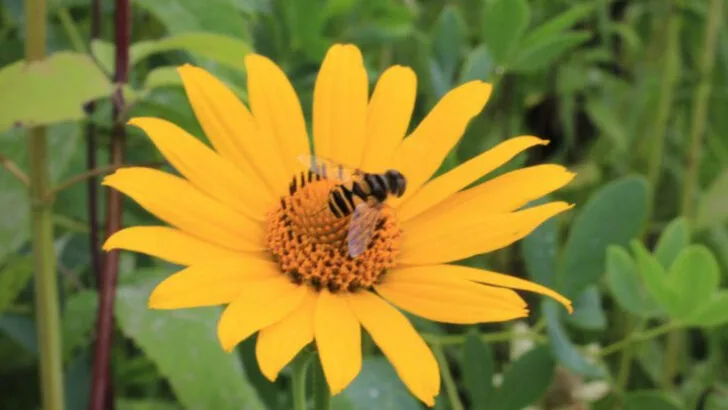You’ve walked right past them. Maybe a hundred times. Maybe this morning. While chasing roses or babying the dahlias, you missed the quiet brilliance growing on its own terms. These native June bloomers don’t beg for attention— they earn it. With resilience, grace, and blooms that bring more than beauty— they bring balance, pollinators, and heart. Some sprawl, some tower. Some glow in shade. Others blaze in full sun. All are ready to show you what real staying power looks like. It’s time to stop overlooking the plants that were here long before the catalogs. And might just outshine them anyway.
Blue-eyed Grass
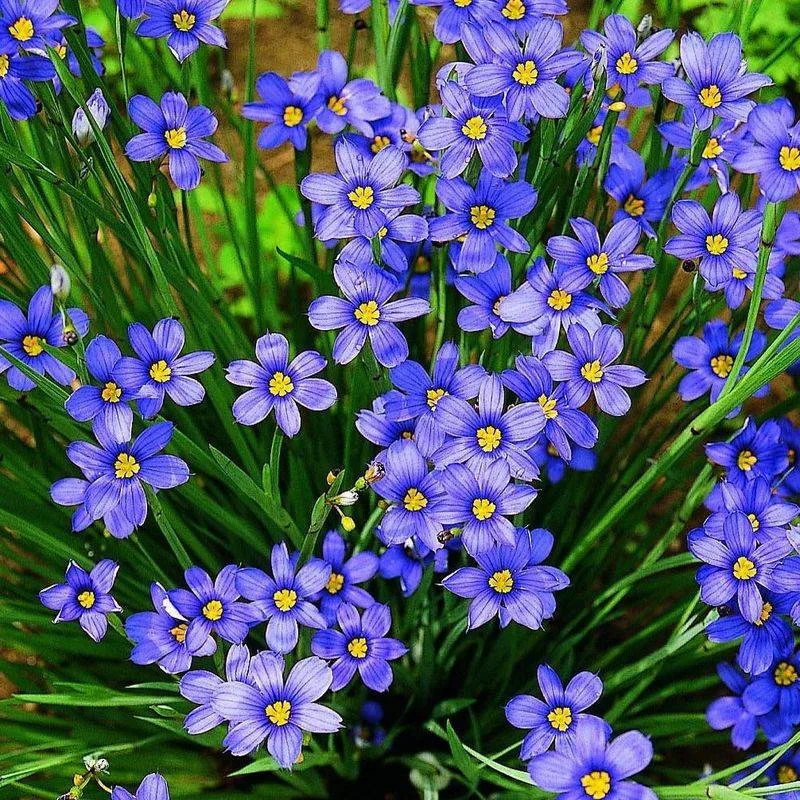
Blue-eyed Grass, despite its name, is not a grass but a member of the iris family. Its star-shaped flowers, with delicate blue petals and a golden center, can easily be missed in the wild.
Blooming in early June, these tiny wonders spread across open meadows and sunny paths, thriving in the sunlight.
This plant not only adds a splash of color but also attracts pollinators like bees and butterflies. Its understated elegance and resilience make it a must-have for native gardens. Once you spot it, you’ll wonder how you ever overlooked its charm.
Firewheel (Indian Blanket)
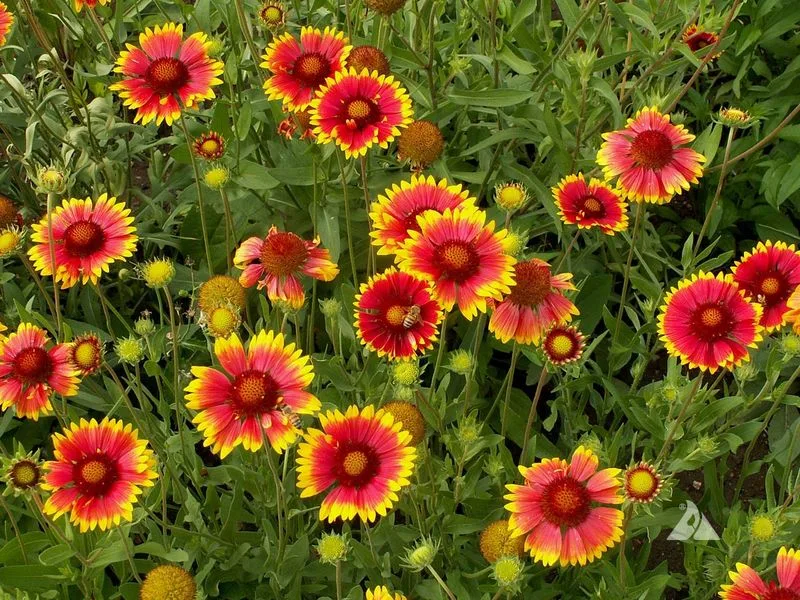
The fiery hues of the Firewheel, otherwise known as Indian Blanket, set the prairie ablaze with color. Each petal displays a gradient of red to yellow, reminiscent of a setting sun.
These cheerful blooms are a feast for the eyes and a favorite among pollinators.
Growing best in sandy soils with plenty of sunshine, Firewheels bring warmth and vibrancy to any landscape. They symbolize beauty and resilience. This hardy perennial offers both visual appeal and ecological benefits, making it a valuable addition to any garden seeking native splendor.
Purple Coneflower
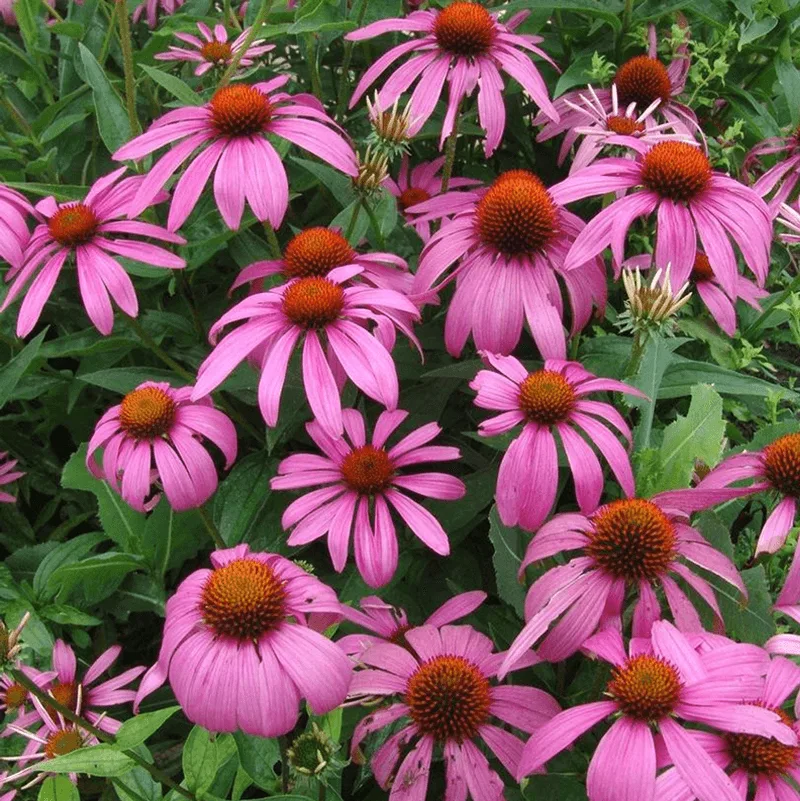
Purple Coneflowers are a garden staple, yet often underestimated for their ecological importance. These robust flowers, with striking purple petals surrounding a spiky orange cone, bloom from June onwards.
Besides their beauty, they serve as a key resource for pollinators and birds.
In traditional medicine, they are known for their healing properties, particularly in boosting the immune system. Their adaptability to various soil types and conditions makes them a favorite among gardeners. These flowers prove that sometimes the most common can also be the most remarkable.
Butterfly Weed
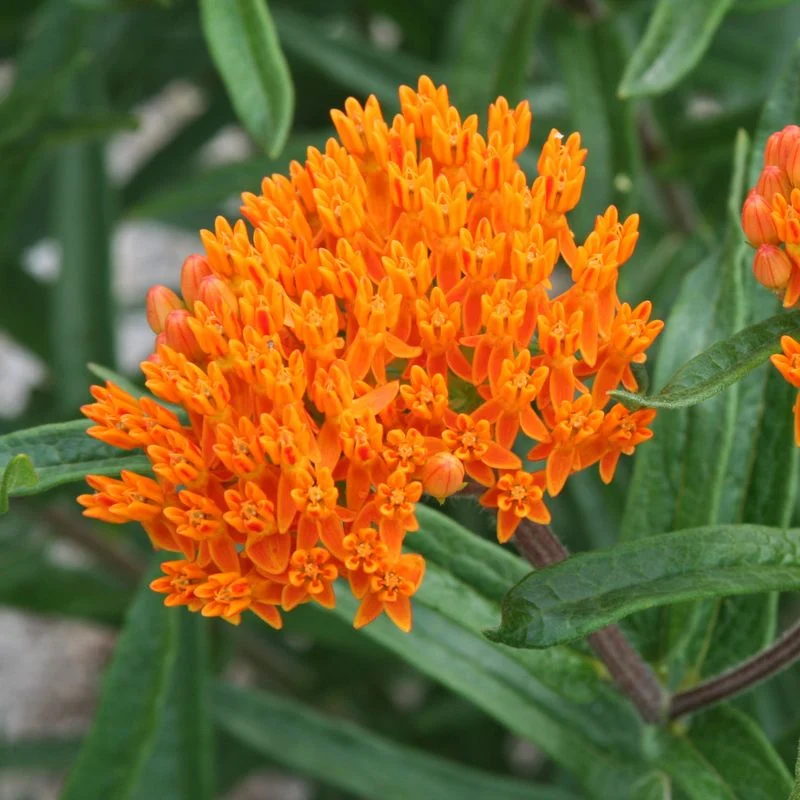
Butterfly Weed is a magnet for butterflies, as its name suggests. With clusters of vibrant orange flowers, it stands out brilliantly in any garden setting.
This plant thrives in full sun and well-drained soil, making it a robust addition to gardens focused on native flora.
Its role in supporting monarch butterflies through their lifecycle is invaluable. Beyond its ecological role, its fiery blooms offer aesthetic appeal. Butterfly Weed is a beacon of life, inviting fluttering guests to enjoy its nectar-rich offerings. This plant embodies both beauty and purpose.
Wild Bergamot
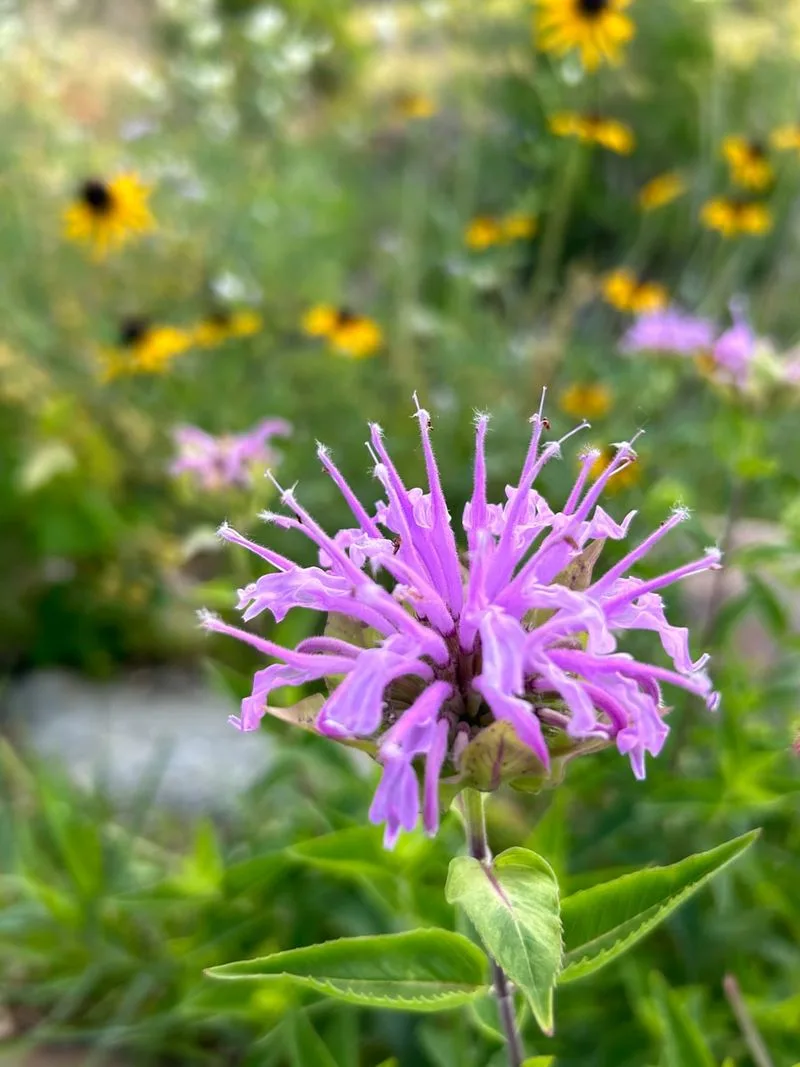
Wild Bergamot, known for its aromatic leaves and pale purple blooms, dances in the wind in June’s warmth. Its unique fragrance attracts both pollinators and garden enthusiasts alike.
This perennial thrives in meadows and open fields, preferring full sun.
Its historical use by Native Americans as a medicinal herb adds to its allure. Wild Bergamot’s presence in a garden not only enhances its beauty but also enriches its ecological diversity. Its ability to draw in hummingbirds and bees makes it a lively addition to any native planting scheme.
Black-eyed Susan

The sunny disposition of Black-eyed Susans, with their bright yellow petals and contrasting dark centers, signals the arrival of summer. These flowers are hardy and versatile, gracing roadsides and fields alike.
Beneath their cheerful appearance lies a tenacity to thrive in various conditions.
Black-eyed Susans are more than just a pretty face; they contribute to local ecosystems by attracting pollinators and providing food for birds. Their ability to uplift a landscape with minimal care makes them a gardener’s delight. Embrace their golden glow and environmental benefits.
Wild Columbine
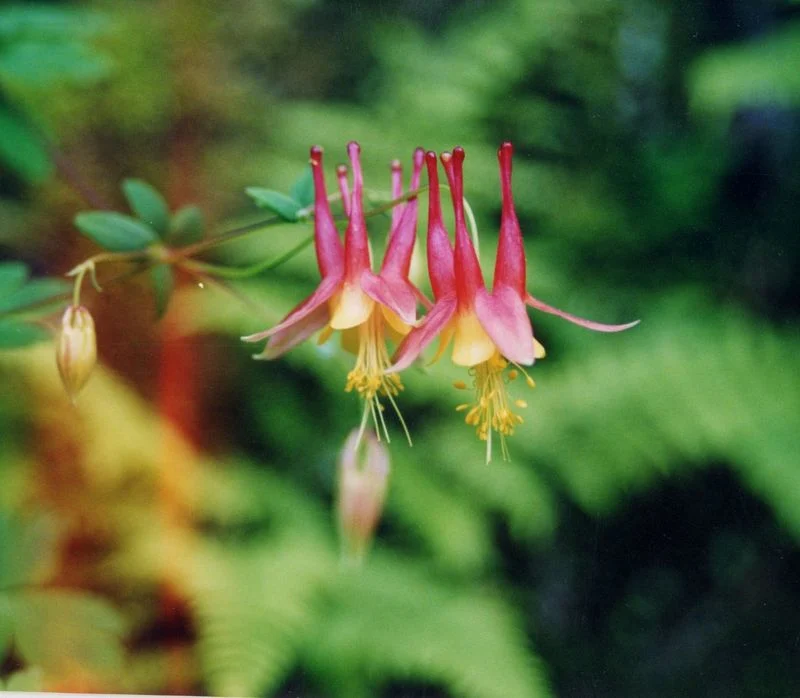
Wild Columbine, with its enchanting red and yellow flowers, adds a touch of whimsy to shaded garden spots. Its delicate, nodding blooms are a favorite among hummingbirds.
Preferring woodland edges and shaded areas, it blooms in June, offering a splash of color where few others dare.
This plant’s unique structure and vibrant hues create a visual feast. Its ability to thrive in less sunny spots makes it an excellent choice for diverse garden settings. Wild Columbine’s charm lies in its graceful appearance and its role in supporting pollinators.
Lanceleaf Coreopsis

Lanceleaf Coreopsis brings sunshine to gardens with its bright yellow blooms. Its daisy-like flowers stand on slender stems, gracefully swaying in the breeze.
This hardy perennial is a favorite for naturalizing landscapes, thriving in poor soil and full sun.
Coreopsis is not just visually appealing; it supports a range of pollinators, enhancing biodiversity. Its resilience and long blooming period make it a staple in native plant gardens. The cheerful presence of Lanceleaf Coreopsis can transform any garden into a lively, welcoming space, full of color and life.
False Sunflower
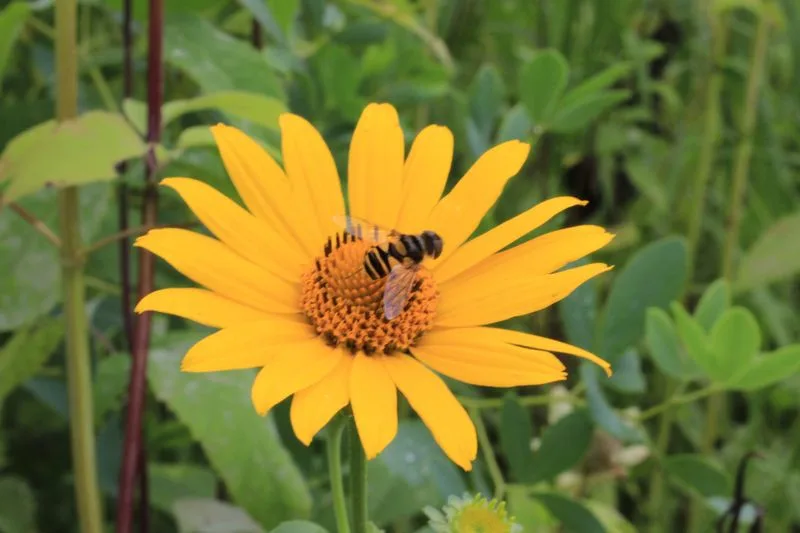
False Sunflower, or Helopsis, lights up gardens with its radiant yellow flowers. Resembling small sunflowers, these blooms captivate with their simple beauty.
They thrive in a variety of soils, preferring sunny locations, and are incredibly easy to grow.
Beyond their visual appeal, False Sunflowers are vital to pollinators, offering both nectar and pollen. Their striking presence and ecological contribution make them a beneficial addition to any garden striving for native beauty. These flowers reassure us that beauty often lies in simplicity.
Meadow Rue
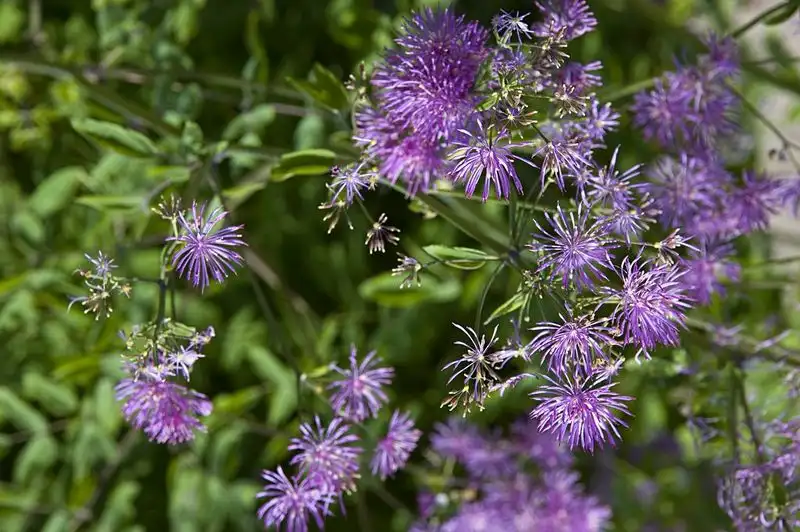
Meadow Rue, with its airy clusters of purple flowers, creates a soft, ethereal presence in gardens. Its delicate appearance belies a robust nature.
Often found in damp meadows and woodland areas, it thrives in partial shade and moist conditions.
This plant adds texture and height, complementing other blooms beautifully. Meadow Rue’s historical use in traditional remedies adds an intriguing layer to its appeal. Its ability to support insects while providing visual interest makes it a versatile choice for gardeners eager to embrace native species.
Mountain Mint
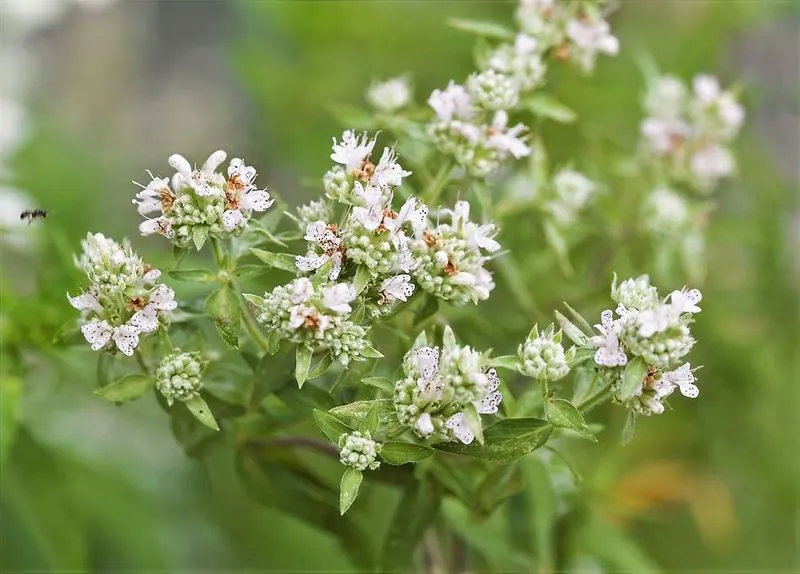
Mountain Mint is a pollinator’s paradise. This perennial boasts clusters of small, fragrant white flowers that attract a variety of bees and butterflies. Its minty fragrance and dense green foliage can make any garden feel fresh and lively.
Not only does it provide nectar for pollinators, but it also serves as a natural pest repellent. Garden enthusiasts love its resilience to drought and poor soil conditions, making it a versatile addition to any landscape.
Mountain Mint is a steadfast companion in native gardens, offering beauty and ecological benefits in equal measure.
Anise Hyssop

Anise Hyssop, with its anise-scented leaves and spikes of lavender-blue flowers, is a sight to behold.
The plant is a favorite among hummingbirds and bees, providing both nectar and a delightful scent that lingers in the air. It’s not just its fragrance; the leaves can be used to brew a soothing herbal tea.
This hardy perennial stands tall and proud, adding height and color to flower beds. Anise Hyssop is easy to grow and maintain, making it a gardener’s favorite for its dual purpose of beauty and utility.
Swamp Milkweed

Swamp Milkweed is a magnet for monarch butterflies, providing vital food for their caterpillars.
Its clusters of fragrant pink flowers thrive near water bodies, adding a splash of color to wetland areas. Beyond its beauty, Swamp Milkweed enhances biodiversity and supports various wildlife.
This native plant is perfect for rain gardens and naturalized areas, where it can flourish with minimal care. Its adaptability to different water conditions makes it a resilient choice for those looking to promote ecological balance in their gardens.
Beardtongue
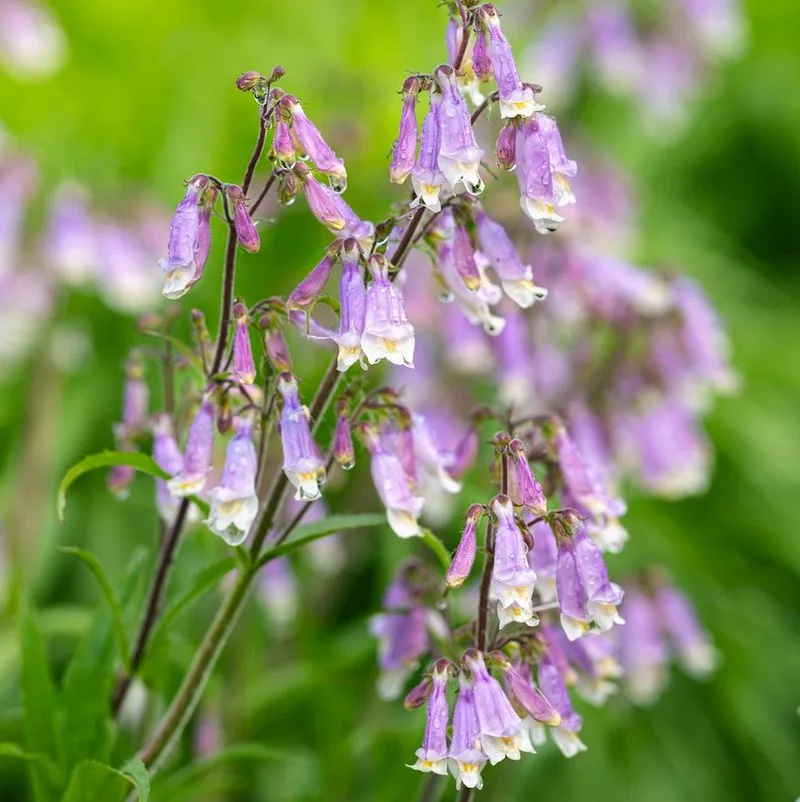
Beardtongue features striking tubular flowers that range from pink to purple, acting as a beacon for bees and other pollinators.
These perennials are known for their durability, thriving in rocky, sandy environments where other plants might struggle. The plant’s unique name comes from the fuzzy stamen that protrudes from the flower, resembling a tongue.
Gardeners appreciate Beardtongue for its ability to add texture and color to any landscape, as well as its low maintenance needs. It’s a standout choice for those seeking an unusual yet hardy bloomer.
Coreopsis
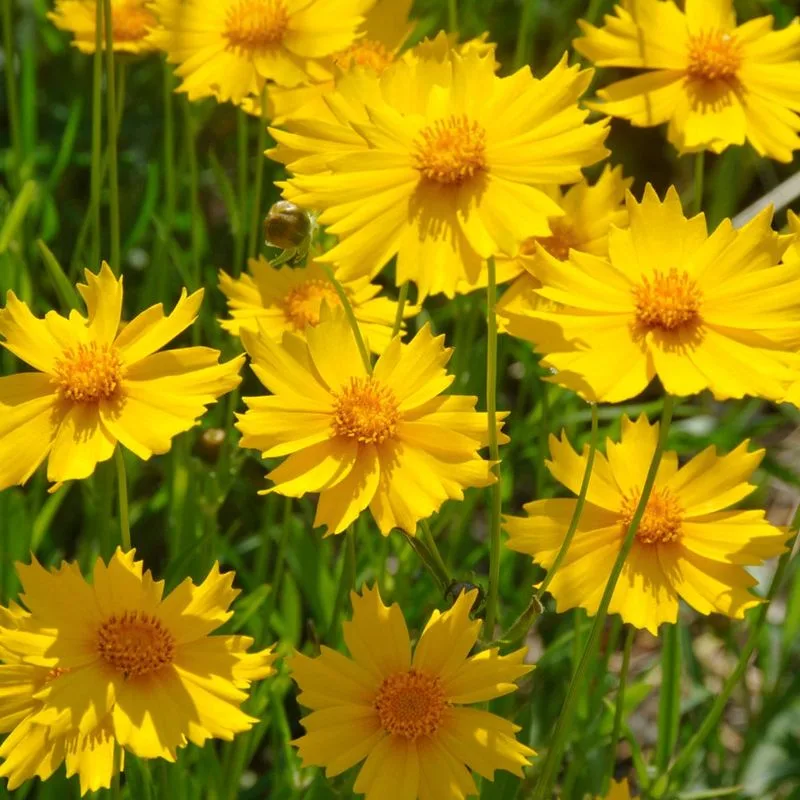
Coreopsis, also known as tickseed, is celebrated for its abundant golden-yellow blooms that bring sunshine to any garden.
These perennials are easy to grow, thriving in sunny spots with well-drained soil. Coreopsis attracts bees and butterflies, making it a beneficial addition to any pollinator-friendly garden.
Its long blooming period extends the garden’s vibrant display well into the summer months. The cheerful flowers and low maintenance needs make Coreopsis a gardener’s ally in creating lively and colorful landscapes.
Native Asters
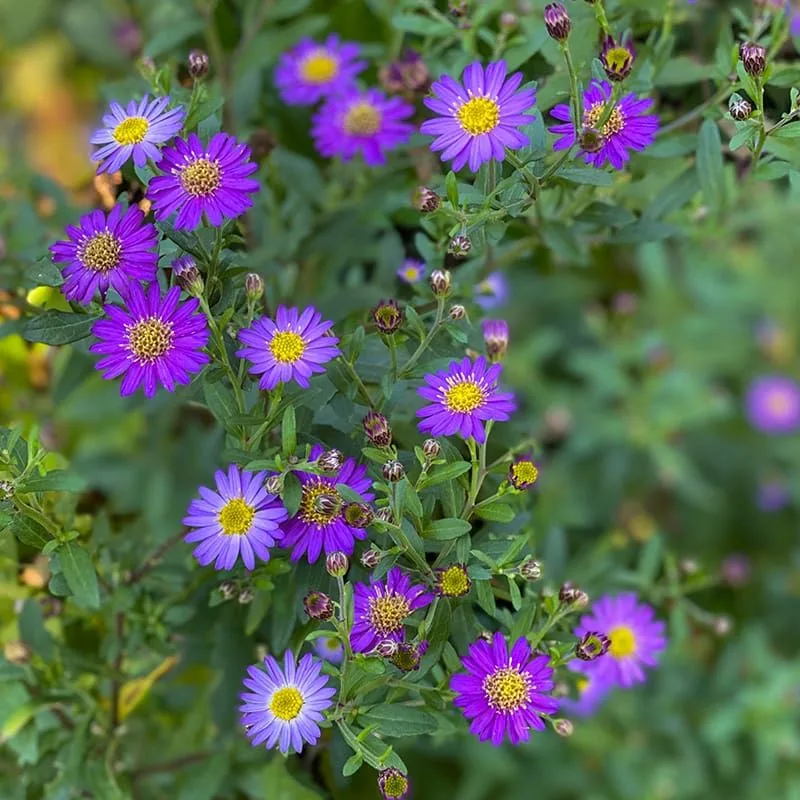
Native Asters are late bloomers, extending the beauty of the garden into the fall. Their starry flowers come in shades of purple and pink, offering a vital nectar source for late-season pollinators.
Asters are a staple in native gardens, appreciated for their ability to adapt to various soils and conditions. They are a low-maintenance choice for gardeners wanting a splash of color late in the season.
The rich history of Asters, used traditionally in medicine, adds an extra layer of interest to this versatile plant’s charm and utility.

